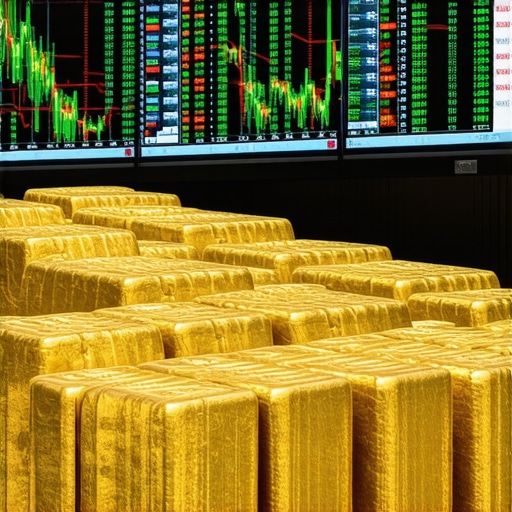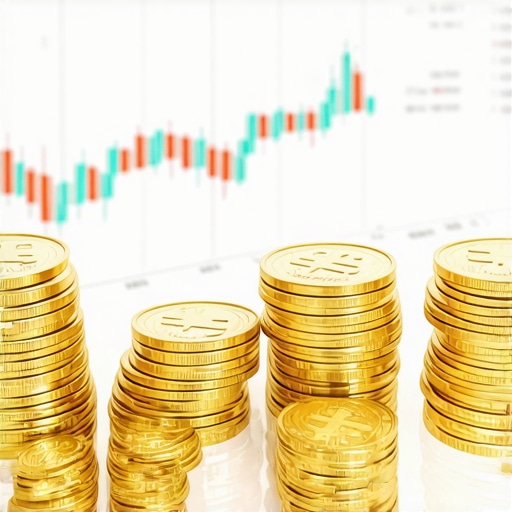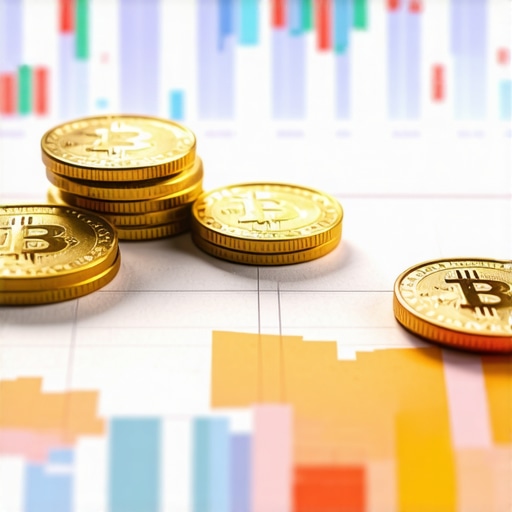Understanding the Strategic Role of Central Bank Gold Purchases in 2025
As financial markets evolve in the face of geopolitical shifts and macroeconomic uncertainties, central banks have increasingly turned to gold as a strategic reserve asset. In 2025, their purchasing behavior is poised to significantly influence gold price trajectories, reflecting not only monetary policy shifts but also broader economic resilience strategies. This complex interaction requires an expert-level comprehension of market dynamics, supply-demand paradigms, and policy implications.
How Do Central Bank Gold Accumulations Shape Market Sentiment and Price Trends?
Central banks’ gold acquisitions serve multiple functions beyond mere reserves accumulation. They act as signals of economic stability, hedge against currency devaluation, and tools for geopolitical leverage. For instance, during periods of USD volatility, central banks might bolster gold holdings to diversify risk, thereby driving demand and elevating prices. Conversely, unwinding of gold reserves can signal monetary easing, affecting investor sentiment. The magnitude and timing of these purchases, especially in the context of 2025’s geopolitical tensions, are critical in forecasting market movements.
What Complex Interplay Exists Between Geopolitical Tensions and Gold Demand in 2025?
Geopolitical tensions, such as trade disputes or regional conflicts, tend to prompt central banks to accumulate gold as a safe-haven asset. This behavior, often amplified by the desire to reduce reliance on USD-dominated reserves, can create a supply-demand imbalance, pushing prices upward. As reported in recent market analyses, the geopolitical landscape in 2025 is expected to be a significant driver of central bank activity, with potential for price volatility driven by policy shifts.
Could Central Bank Gold Purchases Lead to a Price Bubble or Sustainable Growth?
Expert debates revolve around whether increased central bank gold buying signifies a sustainable trend or a speculative bubble. Historically, such accumulation has been correlated with macroeconomic stability efforts, yet excessive demand could lead to short-term price overheating. The critical factor lies in the transparency and consistency of central bank policies—where clear signals promote market confidence, fostering long-term price stability. For investors, understanding this nuanced interplay is vital in formulating resilient strategies for 2025 and beyond.
How Will Gold Price Forecasts for 2025 Incorporate Central Bank Activity?
Forecast models increasingly integrate central bank gold purchase data with global economic indicators, inflation expectations, and currency movements. This holistic approach allows for more accurate predictions of 2025’s gold prices. According to industry forecasts, the expected surge in central bank gold acquisitions could serve as a price catalyst, especially if combined with rising inflation or geopolitical uncertainties.
For those seeking to optimize their gold investments, staying informed about central bank activities and understanding their market implications is crucial. Explore our comprehensive guide on protecting your wealth through strategic gold acquisitions, and consider contributing insights or questions to our expert community.
Deciphering the Nuanced Impact of Central Bank Gold Accumulation in 2025
As the global economy navigates unprecedented uncertainties, the strategic actions of central banks regarding gold reserves have gained heightened significance. In 2025, these maneuvers are not merely about reserve accumulation but also reflect broader geopolitical and economic signals that influence investor sentiment and market stability. Understanding these intricate dynamics is essential for investors aiming to position themselves advantageously within this evolving landscape.
What Are the Subtle Market Signals Embedded in Central Bank Gold Purchases?
Central banks’ gold buying activities convey complex messages—ranging from confidence in long-term monetary stability to hedging against emerging risks. When a country increases its gold holdings, it often signals a lack of trust in fiat currencies or a desire to diversify away from dollar dependence. Such actions can trigger ripple effects across markets, especially when aligned with macroeconomic indicators like inflation rates and currency fluctuations. Analyzing these signals in conjunction with demand trends provides a richer perspective on future price trajectories.
Can Central Bank Activity Alone Drive Sustainable Gold Price Trends in 2025?
While central bank purchases are influential, they interact with a host of other factors—such as geopolitical tensions, inflation expectations, and investor behavior—that collectively shape market outcomes. For example, persistent inflationary pressures might amplify the impact of central bank buying, reinforcing bullish trends. Conversely, transparency and predictable policies from these institutions can mitigate short-term volatility, fostering a more sustainable growth pattern in gold prices. Experts suggest that monitoring central bank disclosures alongside price forecasts enables investors to make more informed decisions.
Interested in how these factors influence investment strategies? Explore our comprehensive resources on central bank gold purchase impacts and tailor your portfolio accordingly. Sharing your perspectives or questions can also deepen understanding within our investor community.
Unraveling the Complex Interplay Between Central Bank Gold Policies and Global Economic Signals in 2025
As we delve deeper into 2025, it becomes evident that central banks’ gold acquisition strategies are more than mere reserve management—they serve as sophisticated signals embedded within a broader tapestry of geopolitical and macroeconomic cues. These maneuvers influence investor perception, market volatility, and long-term price trends, demanding an expert-level understanding to navigate effectively.
How Do Central Bank Gold Reserves Reflect and Shape Global Financial Stability?
Central banks’ gold holdings are often regarded as barometers of national financial resilience. An uptick in gold reserves signals a strategic move toward diversification, especially amid currency devaluation fears or rising inflation. Conversely, reductions may indicate confidence in fiat currencies or a strategic shift toward liquidity. According to a comprehensive study published by the International Monetary Fund (IMF), reserve adjustments are highly correlated with macroeconomic stability initiatives and geopolitical considerations, making them a vital component of global financial architecture.
What Are the Nuanced Market Implications of Central Bank Gold Accumulation in 2025?
Expert analysis suggests that significant gold purchases by central banks can trigger a series of market reactions. These include increased demand-driven price momentum, shifts in investor sentiment toward safe-haven assets, and potential ripple effects across commodities and currency markets. The timing of such acquisitions—whether preemptive or reactive—further complicates the landscape, with strategic accumulations often coinciding with geopolitical tensions or macroeconomic uncertainties.
Furthermore, the transparency and communication policies of central banks influence market confidence. The IMF’s recent analysis emphasizes that predictable reserve management fosters stability, whereas opaque or abrupt changes can incite volatility.
How Do Geopolitical Developments Intersect with Gold Demand and Central Bank Activity?
The geopolitical landscape in 2025, characterized by regional conflicts, trade tensions, and evolving alliances, intensifies central banks’ reliance on gold as a hedge. This behavior underscores a strategic move to reduce dollar dependence and bolster national reserves against currency fluctuations. For instance, recent actions by emerging economies demonstrate a pivot toward gold to mitigate dollar exposure, a trend that could amplify global demand and influence price trajectories significantly.
Notably, the World Bank’s commodity market reports highlight that such geopolitical shifts often precede or coincide with increases in gold demand, further reinforcing the importance of geopolitical risk assessment in investment strategies.
Can Central Bank Gold Buying Create Price Bubbles or Ensure Sustainable Growth?
While increased central bank gold purchases can propel prices upward, the debate persists regarding whether such growth is sustainable or merely speculative. Historically, periods of aggressive accumulation have often been followed by corrections, especially if driven by short-term geopolitical motives rather than long-term economic fundamentals. Transparency and policy consistency emerge as crucial factors in fostering sustainable growth, with clear communication channels and strategic planning reducing the risk of bubble formation.
Investors should monitor central bank disclosures and correlate them with macroeconomic indicators—such as inflation rates, currency movements, and geopolitical events—to discern whether current trends signal genuine resilience or speculative overreach.
How Will 2025 Gold Price Forecasts Incorporate Central Bank Activities and Macro Factors?
Advanced forecasting models integrate data on central bank gold transactions with inflation expectations, currency strength indices, and global risk appetite indicators. According to a 2024 report by the World Gold Council, these models project that sustained central bank buying—especially amid rising inflation and geopolitical tensions—could serve as a robust catalyst for gold prices, potentially pushing them toward new highs in the latter half of 2025.
If you are seeking to refine your investment approach, staying informed via authoritative sources and understanding the nuanced impacts of central bank policies can offer a strategic advantage. Explore our detailed comprehensive guide and engage with our community for expert insights and tailored advice.
Deciphering the Subtle Signals Embedded in Central Bank Gold Strategies in 2025
As global uncertainties persist, the intricate dance of central bank gold transactions reveals much about underlying economic confidence and geopolitical intentions. These subtle signals—ranging from reserve diversification to strategic hedging—are vital for astute investors aiming to anticipate future market movements and position their portfolios accordingly. Recognizing these patterns requires a sophisticated understanding of both macroeconomic fundamentals and geopolitical developments, ensuring that investment decisions are grounded in a comprehensive analysis of emerging trends.
What Are the Critical Indicators to Watch in Central Bank Gold Activity?
Key indicators include the volume and timing of reserve changes, official communications and policy statements, and cross-market correlations with currency and bond markets. Additionally, monitoring geopolitical events and macroeconomic data releases can provide context for interpreting reserve movements. Integrating these signals into a cohesive analytical framework enhances predictive accuracy, allowing investors to make informed decisions amidst a complex and rapidly evolving landscape.
For those eager to deepen their understanding, our ongoing research and expert commentary offer invaluable insights. Join our community discussions and access exclusive resources to stay ahead in the dynamic world of gold investment in 2025 and beyond.
Unveiling the Hidden Layers of Central Bank Gold Accumulation in 2025
As the global economic landscape becomes increasingly complex, central banks’ gold acquisition strategies serve as sophisticated barometers of geopolitical intent and macroeconomic resilience. In 2025, these maneuvers are more than mere reserve adjustments; they are nuanced signals that influence investor sentiment and market dynamics at a granular level.
What Are the Underlying Drivers of Central Bank Gold Purchasing Patterns?
Beyond traditional reserve management, central banks are leveraging gold as a strategic hedge against currency devaluation, particularly in regions experiencing political or economic instability. The interplay between geopolitical tensions, such as regional conflicts or trade disputes, and macroeconomic policies creates a rich tapestry of signals that investors must interpret. According to a detailed analysis by the Bank for International Settlements, reserve diversification through gold is increasingly embedded within broader monetary policy frameworks aimed at safeguarding national financial sovereignty.
How Do Reserve Movements Reflect and Shape Global Financial Stability?
Reserve adjustments—whether increases or decreases—are often embedded with subtle messages about a country’s confidence in its currency and economic prospects. A surge in gold holdings can indicate a strategic move to insulate against external shocks, while reductions may reflect confidence in fiat currency stability. The BIS Working Paper emphasizes that these reserve shifts are intertwined with global liquidity conditions and geopolitical risk perceptions, making them vital indicators for investors seeking to decode market sentiments.
What Are the Critical Indicators That Signal Future Price Movements?
Investors should monitor not only the volume and timing of reserve changes but also official central bank communications, macroeconomic data releases, and geopolitical developments. The synchronization of these indicators can reveal whether gold purchases are part of a long-term strategic shift or short-term tactical responses. Advanced analysis integrating cross-market data—such as currency and bond yields—can uncover emerging patterns that forecast price trajectories with greater accuracy.
How Will 2025 Gold Price Forecasts Incorporate Central Bank Activities?
Forecast models are increasingly sophisticated, blending data on central bank reserve movements with inflation expectations, currency strength indices, and geopolitical risk assessments. The World Gold Council highlights that sustained central bank buying amid rising inflation and geopolitical tensions could serve as a strong bullish catalyst, propelling gold prices towards new highs in 2025. Such models enable investors to better anticipate price movements driven by macroeconomic fundamentals and policy signals.
Engaging with these insights allows investors to refine their strategies, leveraging authoritative sources and comprehensive analyses to navigate the evolving gold market landscape confidently. For in-depth guidance, explore our expert resources and community discussions.
Decoding the Subtle Signals of Reserve Diversification in 2025
Central banks’ gold transactions encode complex messages—ranging from confidence in long-term stability to readiness for macroeconomic shocks. Recognizing these subtle cues requires a sophisticated understanding of macroeconomic fundamentals, geopolitical developments, and market psychology. These signals influence investor behavior, market volatility, and long-term price stability, making them invaluable for strategic positioning.
What Are the Most Reliable Indicators of Future Central Bank Actions?
Key indicators include the volume and timing of reserve adjustments, central banks’ official statements, macroeconomic indicators such as inflation and currency indices, and geopolitical event timelines. Integrating these data points into predictive models enhances market foresight, enabling investors to identify emerging trends with higher confidence. Staying current with authoritative analyses and geopolitical assessments is essential for maintaining a competitive edge.
To deepen your understanding, access our comprehensive resources on central bank reserve strategies and join expert discussions to refine your investment approach in 2025 and beyond.
Expert Insights & Advanced Considerations
1. Strategic Reserve Diversification Signals
Central banks increasingly leverage gold to diversify reserves, signaling confidence in long-term stability and hedging against fiat currency devaluation, especially amid geopolitical tensions.
2. Impact of Geopolitical Risks on Gold Demand
Rising regional conflicts and trade disputes in 2025 amplify central bank gold accumulation, creating supply-demand imbalances that could push prices higher, reflecting a shift towards safe-haven assets.
3. Market Transparency and Policy Consistency
Transparent reserve management and predictable policies from authorities foster investor trust, reducing volatility and supporting sustainable gold price growth.
4. Integration of Macro Indicators in Forecasting Models
Advanced models now incorporate central bank activity, inflation, currency strength, and geopolitical risks, providing more accurate predictions of 2025 gold prices.
5. Long-Term Investment Strategies
Experts recommend monitoring reserve movements, official communications, and macroeconomic trends to optimize gold investments and mitigate risks associated with market fluctuations.
Curated Expert Resources
- International Monetary Fund (IMF) Reports: Offers comprehensive analysis on reserve management and macroeconomic stability, crucial for understanding global financial signals.
- World Gold Council Publications: Provides detailed forecasts, demand supply analysis, and strategic insights into gold market dynamics.
- Bank for International Settlements (BIS) Research: Features in-depth studies on reserve diversification and macroeconomic implications of central bank policies.
- Global Economic and Geopolitical Risk Assessments: Essential for contextualizing reserve movements within broader geopolitical developments.
Final Expert Perspective
Understanding the strategic role of central bank gold purchases in 2025 is vital for sophisticated investors aiming to navigate an increasingly complex market landscape. These maneuvers serve as nuanced signals of economic resilience and geopolitical intent, influencing long-term price trends and investment strategies. Engaging with authoritative resources and maintaining an analytical edge will empower you to make more informed, resilient investment decisions. For those committed to mastering this domain, exploring our comprehensive guides and participating in expert discussions remains invaluable. Your proactive engagement today paves the way for strategic success tomorrow.









